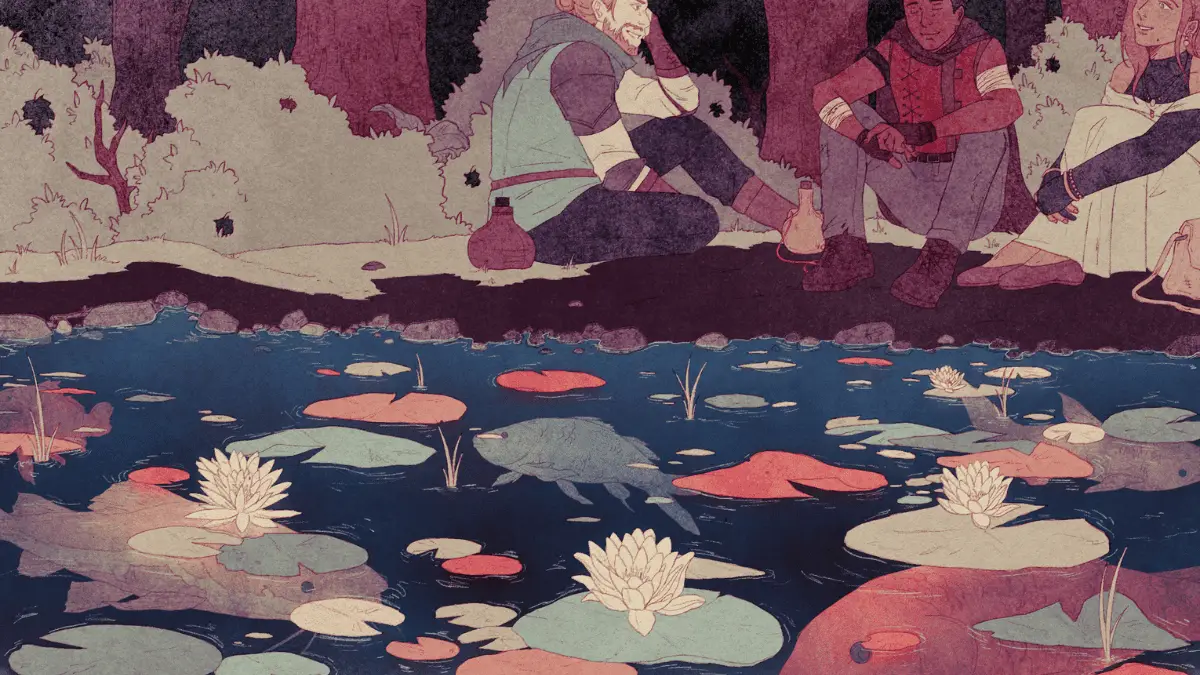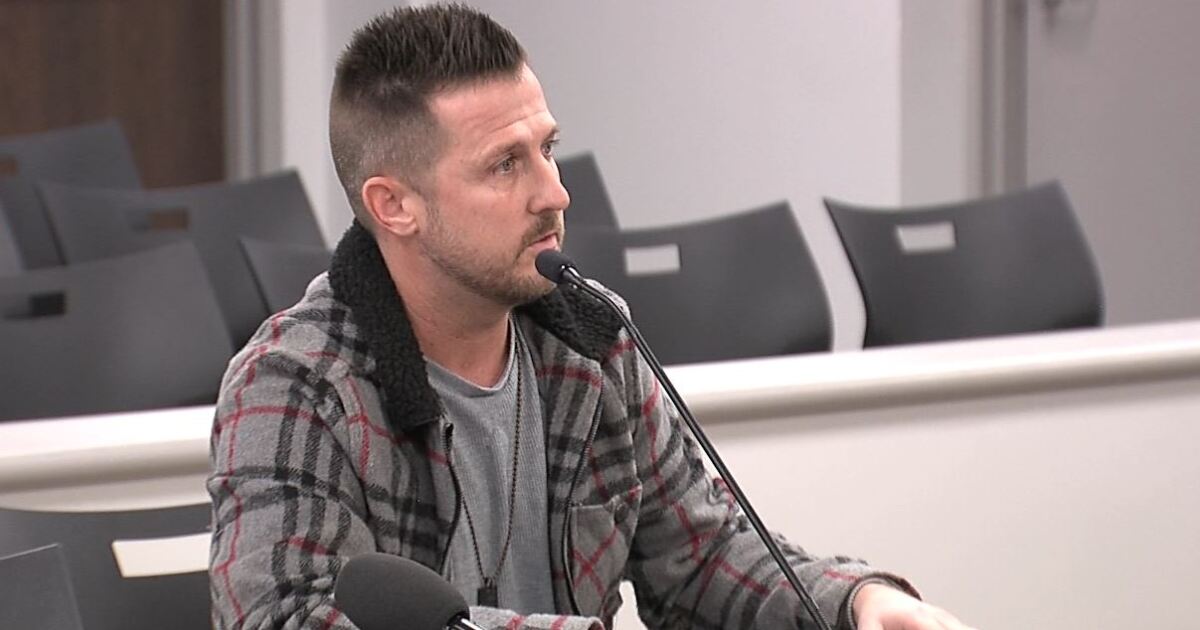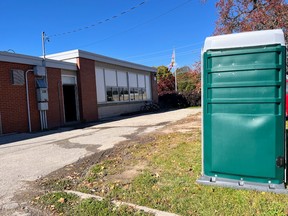Last month, we spotlighted the Kickstarter campaign for Gardens of Ynn, a “depth-crawl” adventure by Emily Allen getting a new edition courtesy of SoulMuppet Publishing (Orbital Blues, Best Left Buried). As they prepare to wrap up their Kickstarter campaign, which has already raised $160,000 against a $12,530 goal, we wanted to have a chat with Emily about Gardens of Ynn, what went in to making it, and her approach to old-school influenced game design.
What was the genesis for the concept of the game, how did you first start working on it?
I’d had a few different ideas about procedural generation knocking around in my head, and a few ideas for encounters and monsters, and figured I’d just smoosh them together and see what came out. After a while, tinkering it turned out to actually look pretty good and I turned it into a serious project.
What inspirations did you draw on when creating the look and feel of Gardens of Ynn?
So, there’s a moment in that Studio Ghibli film, Laputa; Castle in the Sky, where they first arrive at the sky castle, and they find this old garden sprawling over ruins, with an old automaton still trundling about in between the wild birds. It’s this little moment of quiet beauty before the plot kicks back in. That moment was the first seed. And then, at that point, there was a real trend in OSR games and modules to be really dark and bleak and pessimistic, so I wanted to make a contrast to that. At the time I was really into Adventure Time, as well as various other weird fantasy bits and bobs, so I wanted to lean more towards that strange and whimsical side of fantasy, and away from the grimdark. It’s a joke you see sometimes that everybody keeps trying to make ‘Ghibli-Inspired D&D’ no matter how bad an idea that is, but it’s kinda where I was coming from. But it’s more on the Nausicaa end of the scale, rather than the Kiki’s end of the scale.

Can you give us an idea of what a depth-crawl is and why you chose to use that form for Gardens of Ynn?
So, the point of a depth-crawl is that you generate a network of randomly-generated locations. You track how many locations you are from your starting point – your depth – and that’s a modifier to the chart you roll on to see what you find next. Meaning that the deeper in you go, the further down the chart your results are, letting you get weirder the more you explore. It’s a pretty neat little system, and I’m very proud of it. And, in an ideal world, I’d say that this was designed very cleverly to create a particular mood; in truth, I came up with the idea of randomly rolling locations as you go because I can’t draw very well, and didn’t want to have to draw maps for the adventures I was working on.
How do you balance the sublime and the horrific in your game design like you have with Gardens?

I think the key to a lot of my design is that I don’t really make value judgements, I don’t set out to make things that are good or bad. I just make stuff I think is interesting, and let the audience work out what they think of it.There’s stuff that’s probably quite horrific when you think about it, but I’m not setting out to write horror specifically; rather I’m giving myself permission to write horror, if that’s where the creative process takes me. Some stuff’s gonna be horrific, and I don’t want to pull my punch there, but I don’t set out to produce a set percentage of horror content. It just kinda happens. I think the juxtaposition of different moods – the sublime and horrific, and also the melencholy and whimsical bits that made it in there – adds to the surrealism of it. It’s almost child-like, the way you can lurch from mood to mood, in a way I find very satisfying in practice.
What emotions or feelings do you hope to create with Gardens? What’s the biggest takeaway you’d want players to have at the end?
A big part of what makes RPGs – particularly explorative RPGs like OSR games – is the joy of discovery. That curiosity about what’s around the next corner, and the wonder at finding something truly strange. That’s what Ynn’s designed to key into. It’s surreal or frightening or beautiful or melancholy at times, but the point is to evoke curiosity. I want players to come away wanting to know more, to keep exploring because there’s more to find. It’s why there’s patterns to some stuff in there, it’s why the random tables let you keep on going deeper for such a long time. And to achieve that, you want a variety of – I suppose – little sub-emotions, to keep variety in there. Some stuff is scary or quaint or what have you so you don’t know what you’ll get next.
Dream-logic and the feeling of dreams seems to be big part of the look and design of Gardens. Was that intentional? How do you think we can engage with our dreams through play?

The dream-logic bit came from two places. Firstly, it’s an extra-planar adventure, it should feel weird. So many adventures send you to Hell or what-have-you, and then its just the material world but with spikes and fire all over the place, and that’s a huge let-down in my view. Extraplanar adventures should be weird. So I set out to create a place that seems like it has rules, but prevents you from quite grasping them properly. But then, the other factor was that this is all randomly-generated. The dice are gonna produce results that seem jarring or inconsistent sometimes, so the surrealism is a sort of release-valve for that. Sometimes, yeah, the random result makes no sense, but then why should it make sense if we’re operating on dream-logic? I think of this kind of high-randomization RPG as being a lot like an ink-blot, really. Throw a lot of random stuff out, and see what patterns the brain finds. You gotta let go of this idea of perfectly choreographing everything, and let the dice do what they want, and be along for the ride. So the dream-like atmosphere helps with that, it kinda gives you permission to just let the dice decide what happens, even if it doesn’t quite make sense.
How did you come up with the visual aesthetic of Gardens? How do Riotbones’s new illustrations tie into your vision for the game?

Well, I’m really lucky, I’ve got some very talented people working on it. Bones, of course, but also Ramona doing the cover and Minerva laying it out. It’s a really talented team, and honestly the best thing I can do is trust them. Let the creative people be creative, and they’ll produce something good. So visually, I think what we’ve got is extremely them. It’s their version of Ynn, filtered through their own interpretations. But then, I think that’s pretty fitting, considering that the adventure’s meant to play out differently for every table. We’re seeing one idiosyncratic version out of the many possibilities, and I think that’s appropriate; there’s no canon, but here’s Bones’s take on it.
You can back Gardens of Ynn through 7PM tonight, or check it out on full publication by SoulMuppet Publishing later this year.
Images via SoulMuppet Publishing
Have strong thoughts about this piece you need to share? Or maybe there’s something else on your mind you’re wanting to talk about with fellow Fandomentals? Head on over to our Community server to join in the conversation!









